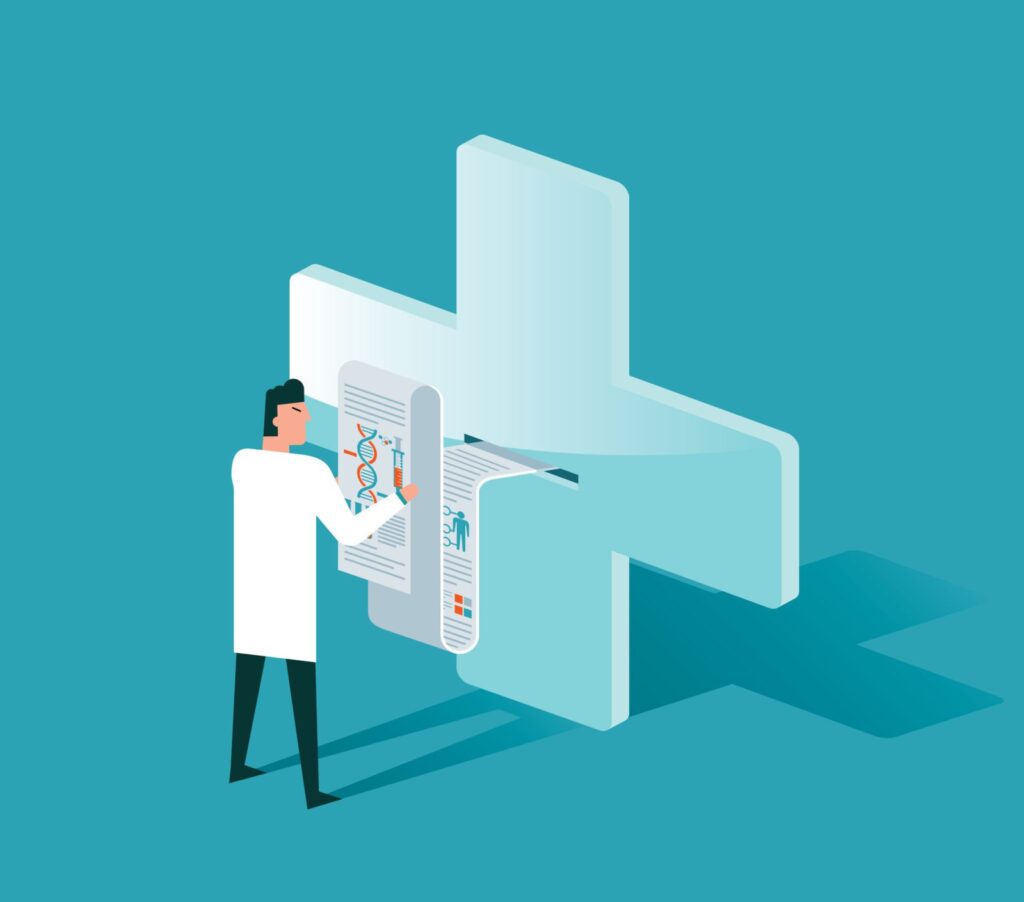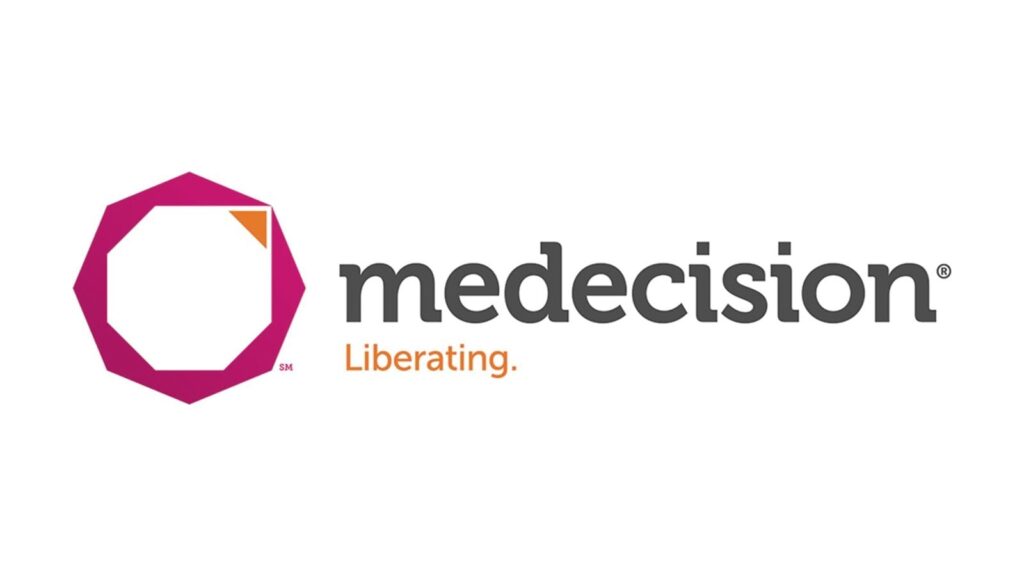
Artificial intelligence, including machine learning, can help you analyze and turn mountains of data into actionable insights. This can lead to positive outcomes for patients and your organization. Are you ready to optimize your data analysis?
By Medecision
Data can be an enormously helpful asset. But by itself, data doesn’t guarantee insight. That is, you can’t act in meaningful ways until you have the right data and can harness it and extract what you need from it. Your goal becomes turning data into actionable insights that can lead to positive outcomes.
Harnessing Large Amounts of Data
It can be hard or even impossible for humans to process large amounts of data. That’s why many data experts began to advocate for the use of artificial intelligence technology such as machine learning techniques.
“The main focus of machine learning is to develop a computer program which can access” data and use it for the purposes of learning, write the authors of a 2019 study in Journal of Biology and Today’s World. Applied to healthcare, “machine learning uses various statistical techniques and advanced algorithms to predict the results of healthcare data more precisely.”
Machine Learning and Healthcare
Essentially, machine learning is used to recognize patterns within patient health data and apply algorithms to predict patient outcomes. It can be used to analyze different kinds of healthcare data, including clinical, omics and sensor data (e.g., from wearable and wireless sensor devices).
This aspect of artificial intelligence has a great deal of potential for the future, especially when it comes to individualized treatments, according to a 2019 article in Future Healthcare Journal.
“In the form of machine learning, it is the primary capability behind the development of precision medicine, widely agreed to be a sorely needed advance in care,” the authors write. Precision medicine holds promise because it incorporates so much data into the model that it’s possible to create treatment approaches tailored to each individual.
Making Data Actionable
So how do you make the mountains of data that you’re collecting actionable? First, identify your starting point on the data analytics spectrum. As a column in Healthcare IT Analytics notes, there are three kinds of big data analytics (descriptive, predictive and prescriptive). Knowing where your organization falls on that spectrum will help you identify the competencies you must develop to move further along it. This will ultimately empower your organization to use analytics to turn big data into smart, actionable data.
To help you identify your starting point, here’s a breakdown of the three big data analytics types:
Descriptive Analytics
Descriptive analytics deals with raw, historical data and is where most organizations will start on the spectrum. Reporting this data answers the question, “What happened?” But it doesn’t explain why it happened. Aggregating and analyzing that data (often referred to as diagnostic analytics) to spot trends, identify anomalies, and uncover underlying issues that are contributing to outcomes will help answer the “why.”
Predictive Analytics
Predictive analytics is further along the spectrum. It’s about answering the question, “What should we expect to happen next?” Based on large volumes of historical data and near-real-time or real-time data, as well as patterns/trends spotted through analysis, what predictions can we make about the future? A good example of predictive analytics comes from the financial sector: credit scores. Banks use historical information to predict whether or not candidates will make timely payments in the future. Another good example comes from healthcare, where predictive analytics is often used to risk stratify or assign a risk score to patients.
Prescriptive Analytics
Finally, there’s prescriptive analytics. Prescriptive analytics in healthcare is about answering the question, “What should we do next?” If the goal is to use data to inform decision-making, the ideal is for that data to help pinpoint the best course of action with the highest probability of yielding the best possible outcome. This is where digital solutions, proven algorithms, artificial intelligence, integrated data systems and more come into play.
Moving From Where You Are to Where You Want to Be
Most organizations collect large amounts of descriptive data. But what comes next? Is your organization equipped to extract information from its collection of descriptive data? Are you able to extrapolate to make predictions of future events? Beyond that, is your organization ready to determine what treatment or action would likely produce the best benefit if the future event did occur?
Recruit a Multidisciplinary Team
To move from descriptive to predictive and prescriptive analytics in healthcare, you may need to recruit a multidisciplinary team to determine the best way to proceed. That may involve identifying certain IT tools and purchasing new software, as well as educating appropriate team members on using the new technology. But it’s worth it to have a strong system in place that can make data easier to analyze. It can also free up your team to do higher-level and higher-value work.
Ensure Balance Between Gathering and Analyzing Data
Your organization must also create balance. You want to invest in gathering data and extracting information. But you also want to be sure you know why you’re gathering and analyzing that data.
A few questions to consider:
- Where would you like to see your organization in five years, and what are your top priorities?
- Can your organization identify its biggest challenges and the areas that are most ripe for improvement?
- Can your organization demonstrate how using analytics will help make those improvements?
Understand the Value of Predictive Analytics in Healthcare
Ensure your organization isn’t so focused on gathering and analyzing data that it loses sight of the end goal. The end goal is to gain insights that can be used to shape policies and treatments to realize better outcomes.
That’s the principle underlying predictive analytics: the ability to identify potential risks and take action before it’s too late to help patients. For example, predictive analytics in healthcare can help predict how patients may respond to a certain kind of treatment. This can help providers make informed decisions about which treatments to pursue to improve their patients’ outcomes. Predictive analytics is also being used to improve business operations, assess public health risks, and address a number of health issues, including sepsis, hospital-acquired infections and fall prevention.
Hire the Right People
One way to get actionable data: Put the right people in charge. Build the best team of well-trained data analysts working to capture valuable insights from the data your organization collects. Encourage them to communicate frequently and make sure they have the same overarching goals. Then empower them to make decisions.
Connect Insights to Programs
Once you’ve gained some insight from your data, you have to apply it. A strong data strategy will help you devise and implement effective interventions. Such a strategy includes an avenue for connecting the insights you glean to the programs you offer, such as care management, utilization management or specific public health programs. The data can help you determine whether you’re targeting the appropriate group of people with the appropriate interventions. Then you can track the results to learn whether the efforts are making a difference.
Ultimately, having a strong system in place for turning data into actionable insights will make your organization stronger and more efficient.
Medecision’s HITRUST CSF®-certified, SaaS solution, AerialTM, optimizes the delivery of personalized, predictive, and prescriptive next best actions for clinicians, physicians, consumers and their caregivers.



About The Author: Medecision
Fully delivering on the promise of data — and making the business of healthcare simpler and more successful — Medecision offers a whole new world of possibilities. The company's flagship offering, Aerial™, stands as the market's most extensible clinical data platform. It offers complete contextual awareness of members and automates next best actions — simple campaigns, complex care management, utilization approvals, and more — for optimal health outcomes.
Aerial is not only quick to deploy, it is easy to manage. The platform's effectiveness in reducing both medical and administrative costs, coupled with its role in improving the member and patient experience, has made it the preferred choice for health plans and care delivery organizations. Presently, Aerial is instrumental in catering to over 10% of the U.S. population, marking a significant milestone in advancing healthcare efficiency and effectiveness.
More posts by Medecision